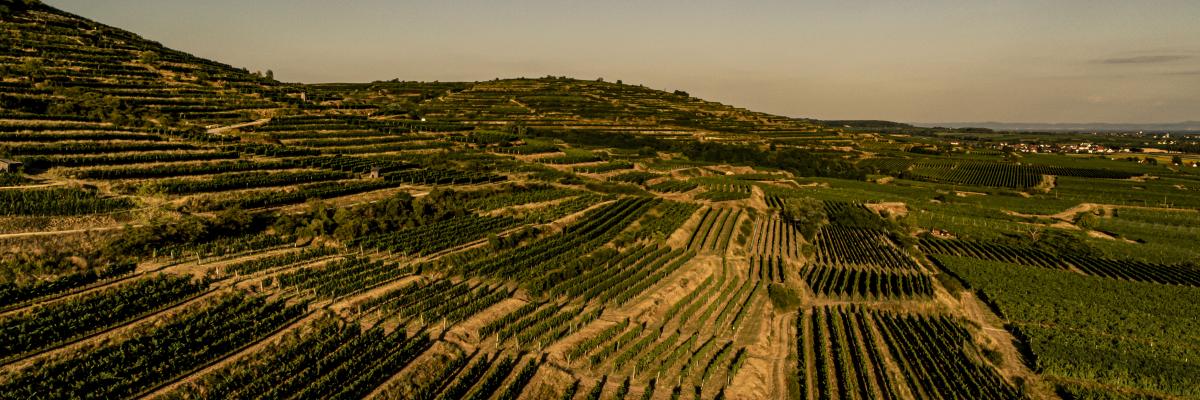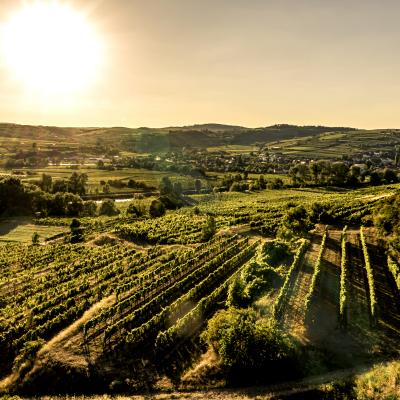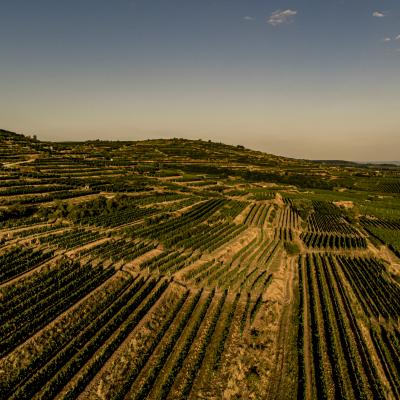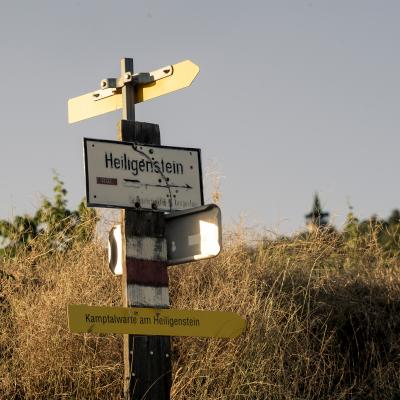

The Deserts Lives
The climate on the Heiligenstein Erste Lage in summer is dry and hot during the day, and mostly windy and fresh at night. Grüner Veltliner is at home only at a few spots on the Heiligenstein. The rest of this great hill is ideal terrain for Riesling; the meagre, rocky conditions are exactly what the variety loves.
It was assumed for a long time that during the Middle Ages, “Hellenstein” was derived from the hot, burning conditions of hell – and that the church prompted a change in semantics. While this story does seem to make sense, it is ultimately just a legend. "Hel" in Middle High German actually meant “shining” and “light" (ergo the bright mountain). Only through linguistic transformation did “Heiligenstein” evolve.
The Soil
The Heiligenstein is geologically complex, but is based significantly on Zöbinger Perm. Unique in Europe, this desert sandstone is interspersed with volcanic conglomerates and charred remains of organic material. In some places, it’s crumbly and loose, which is quite typical for sandstone; while in other locations, it is compact, hard and difficult to work with. Occasionally the Zöbinger Perm has inclusions of gneiss and granite; here, the vines are rooted directly into the rock.
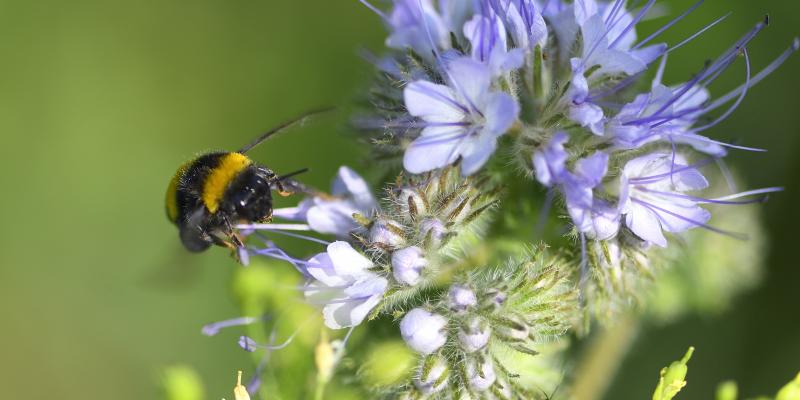
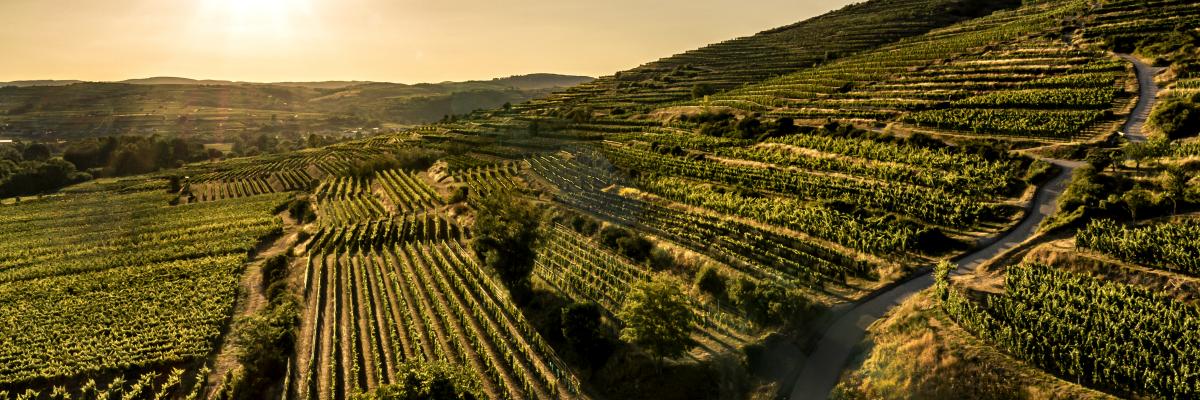
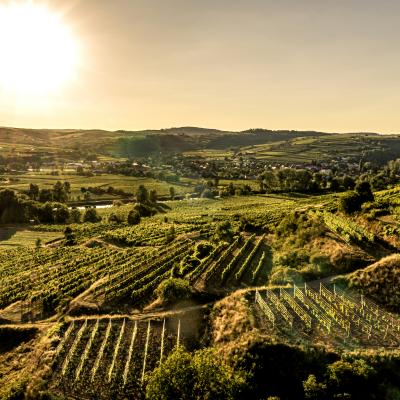
“It was assumed for a long time that during the Middle Ages, “Hellenstein” was derived from the hot, burning conditions of hell.„
